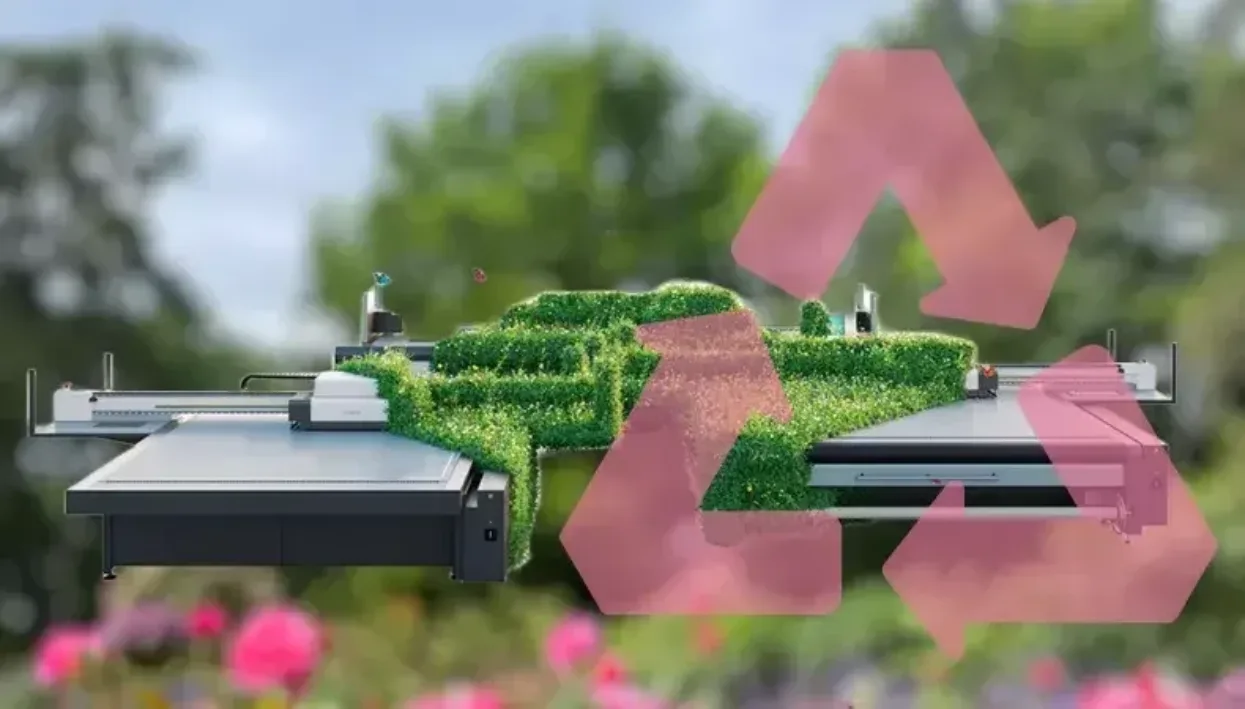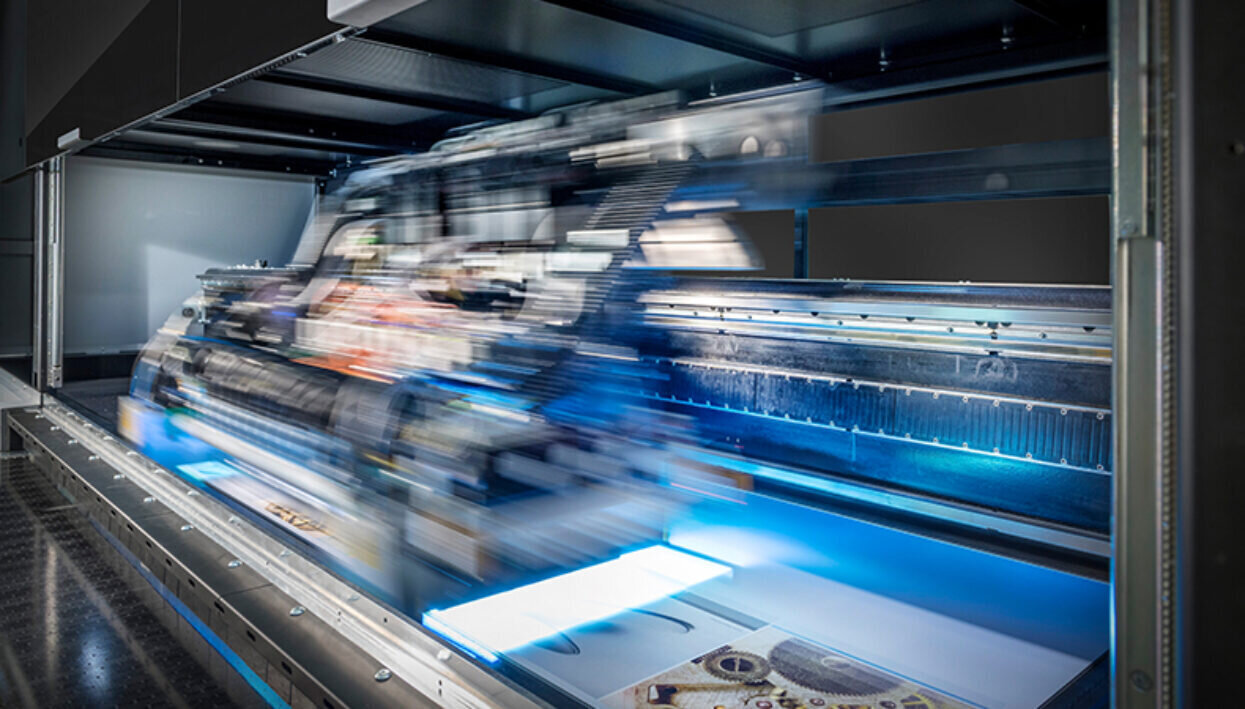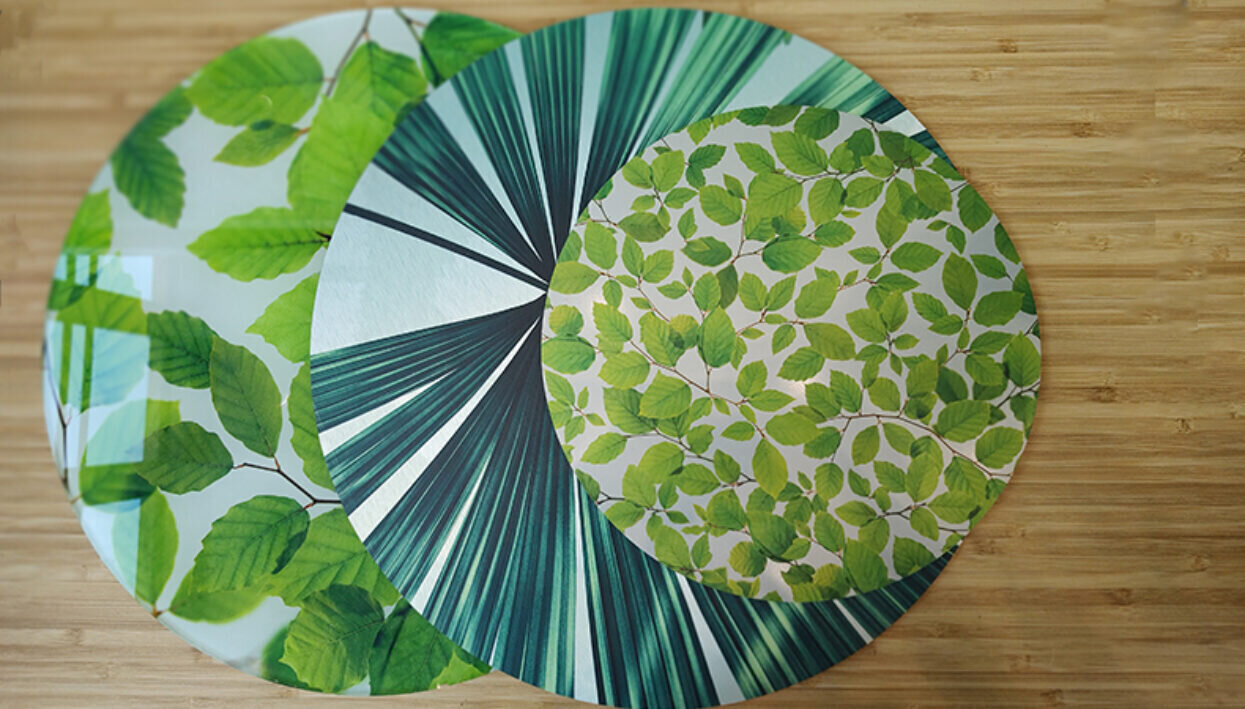
Manufacturing large format printers requires a lot of energy and resources. However, compared to other machinery in the graphic arts industry, such as screen printing or offset lines, their lifespan is much shorter. What happens when printers get recycled and what are manufacturers currently doing to mitigate negative impact?
“Especially when we compare digital and analogue printing, digital wins by a long way in terms of sustainability,” says Henning Ohlsson, Managing Director Epson Deutschland GmbH and Director Sustainability Epson Europe.
Digital printing uses less power than any analogue presses, even for long runs. In addition, the digital printing does not require forms, which saves even more chemicals, energy, space, and labour.
When it comes to industrial production, Ohlsson emphasises the advantages of on-demand production especially for textile goods. “Digital textile printing makes on-demand production attractive even for single pieces or small runs. It becomes economically feasible to produce only what is used. Local production across all areas of the supply chain brings substantial advantages regarding to today’s sustainability issues.”
So, when we consider the overall process should you worry about printer recycling? Epson and other manufacturers are making great efforts to ensure that digital printers live longer and are recycled properly once they cannot be used any more.

CAPTION: At FESPA Global Print Expo 2022, Durst presented the P5 Double 4 upgrade option. It can also be retrofitted to existing installations. Image credit: Durst
Printer recycling: where do old printers go?
The term “large format printer” covers a wide range of machinery, some manufacturers include A2+ office desktop printers in this category. Other manufactures focus more on high speed printers with several tonnes of weight that require a production environment. The material use and service life of both is very different and needs to be considered when recycling. Desktop services tend to only be used for 5 – 6 years, while industrial machinery is usually planned to last ten years or sometimes even longer.
If a printing press is outdated, there are several options:
- In the field upgrade
- Exchange for a new model or a model from another manufacturer
- Trade in at manufacturer, leasing partner or dealer
- Selling it second-hand on eBay or via trade magazines and websites
- “Retirement” of the machine, which is taken out of daily production but remains in the company as a back-up for breakdowns or for order peaks.
- Printer recycling as electronic waste at the local waste disposal or via specialist companies.
The most common economical way to extend the life of a printer and save it from immediate recycling is to upgrade installations. Many manufacturers now offer these options, a recent example is from FESPA Global Print Expo Berlin 2022 being Durst‘s P5 Double 4 option for existing and new installations of the P5 350/HS and P5 210/HS models. Productivity has nearly doubled by adding a second CMYK printhead row.
New options such as neon colours can also be easily retrofitted to any printer of swissqprint, a manufacturer founded in Switzerland in 2007. In addition to their long lifetime they offer also a high build quality end result. Petra Fetting, Marketing Communication SwissQprint, says: “Fortunately, we don’t have to worry about recycling printers so far. Even first-generation models are still working, and that’s after almost 15 years of service.” She adds: “Our printers are very popular on the second-hand market. After a refurbishment process, they are almost like brand new. ”
“Epson large format printers are very durable, from the most technically demanding part, the printhead, down to the components that are used. To put it simple, they continue to run and run. Our service programmes are designed to support this longevity. If there are any technical issues, the programmes solve them quickly so that the device can continue to be used,” says Henning Ohlsson.

CAPTION: Digital printing can make industrial production more sustainable. But printer recycling remains a challenge. Image credit: S. Angerer
From printer to raw material
If an upgrade is no longer possible or economically feasible, manufacturers frequently offer trade-in. For example, HP is currently boosting various trade-in programmes until the end of October 2022. These are aimed at both retailers and any business customers.
However, with trade-in and exchange programmes, it is difficult for the former owner to say for sure what will happen to the device. If the printer will be recycled, remanufactured or end up in a landfill. This is especially a concern when manufacturers are not directly involved. “Since we market our machines exclusively through the trade channels, we are not confronted with the issue of recycling / leasing returns,” says for example Frank Schenk, General Manager Sales at Mutoh Europe nv.
Epson also only sells large-format printers through trade channels. But according to Ohlsson, they also offer a free direct recycling or disposal service for commercially used Epson devices.
Recycling companies that specialise in clearing production facilities usually issue certificates for the goods they recycle. This makes them a viable choice for the disposal of large, obsolete, super wide-format printers. It is also important for printers in the process of preparing an environmental report or trying to offset their carbon footprint.
If a digital printer remains with the printer as a back-up or enters the private second-hand market, printer recycling will get delayed for several years. This means machine life gets extended significantly which can help to make better use of resources. As a downside, it remains uncertain if the large format printer will be recycled at some later point. That is why some manufacturers now offer certified refurbished programmes.

CAPTION: Second-hand products are in demand across most industries. This increasingly includes digital printers. Image credit: S. Angerer
Refurbished instead of recycled printers
Refurbished IT hardware, i.e. equipment that has been professionally remanufactured, is now common in many industry sectors. Surging prices and a shortage of raw materials have led to a rising demand for secondhand wide format digital printers. In some cases, manufacturers such as swissqprint offer refurbished machines directly or through partners.
Canon’s Arizona Remanufacturing Programme collects fully functional, end of contract systems and ships them to their Ve nlo remanufacturing yard. All Arizona Prémia Class machines are certified to have passed the Canon remanufacturing process. According to the manufacturer, 66% of the material-related CO2 emissions, compared to a new device, can be saved.
Ohlsson has observed that the professional refurbishing of used printers is no longer a manufacturer’s prerogative: “If a device needs to be replaced, we now see that the dealers are usually very active and focused on refurbishing. The growing refurbished printer market is certainly also in part caused by the difficult overall economic situation. Devices need to remain in use as long as possible.”
Better design, smaller footprint
The challenges of a future with less energy and scarce raw materials will also affect the digital printing industry. Modular design and easy options to repair existing printer installations at low cost or even upgrading them to a newer technical standard, contribute to an efficient use of resources. Printer recycling must become simpler, more reliable, and easier.
This poses considerable challenges for manufacturers of digital printing equipment. They must keep the entire product life cycle in mind when designing machinery. Yet, the more durable the products, the rarer new installations will become. Therefore, their value chain will need to consider even more service and software. This is likely to have a considerable impact on users, as it is to be expected that leasing and subscription offers instead of (one-off) purchases will become even more prevalent in the industry in the future.